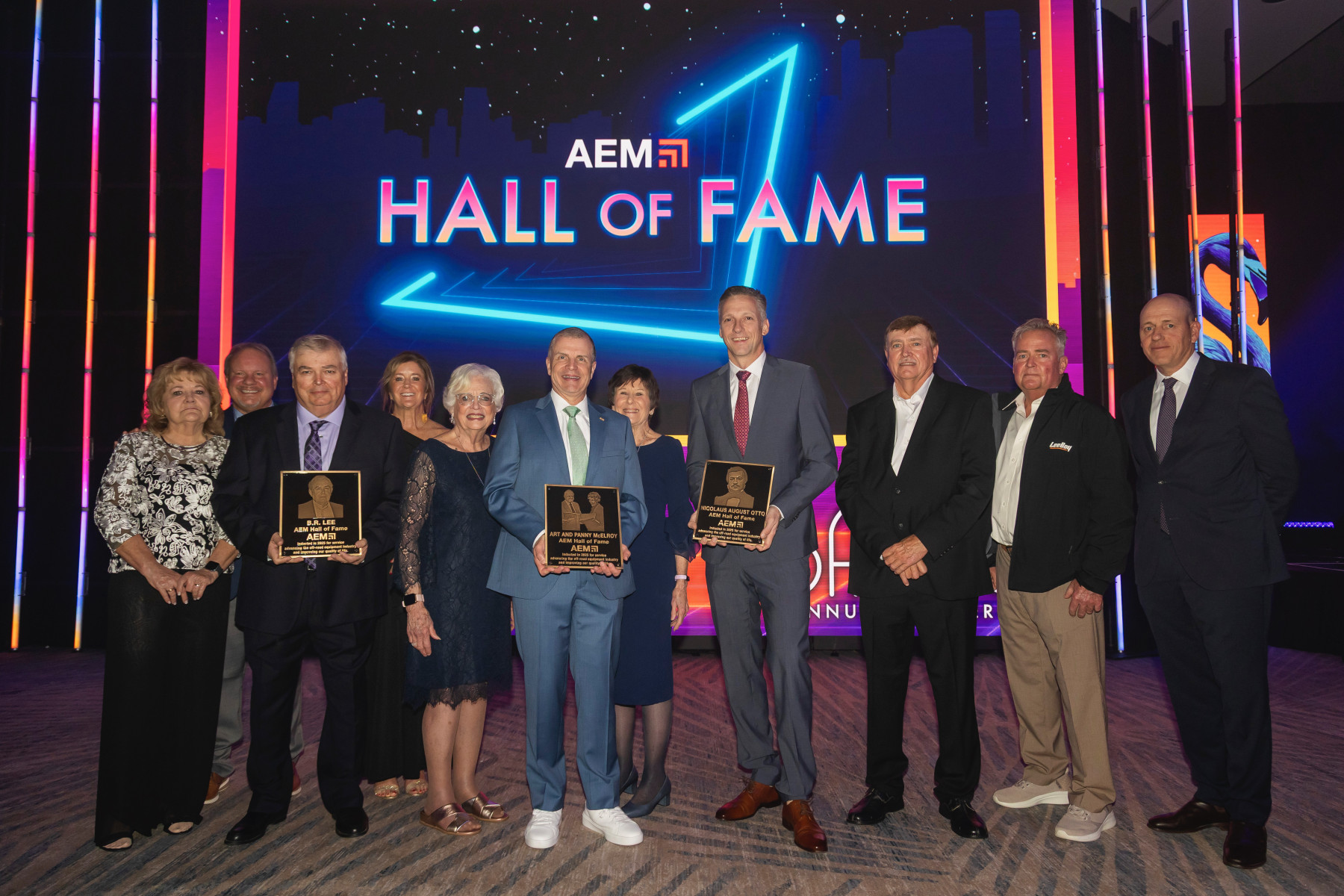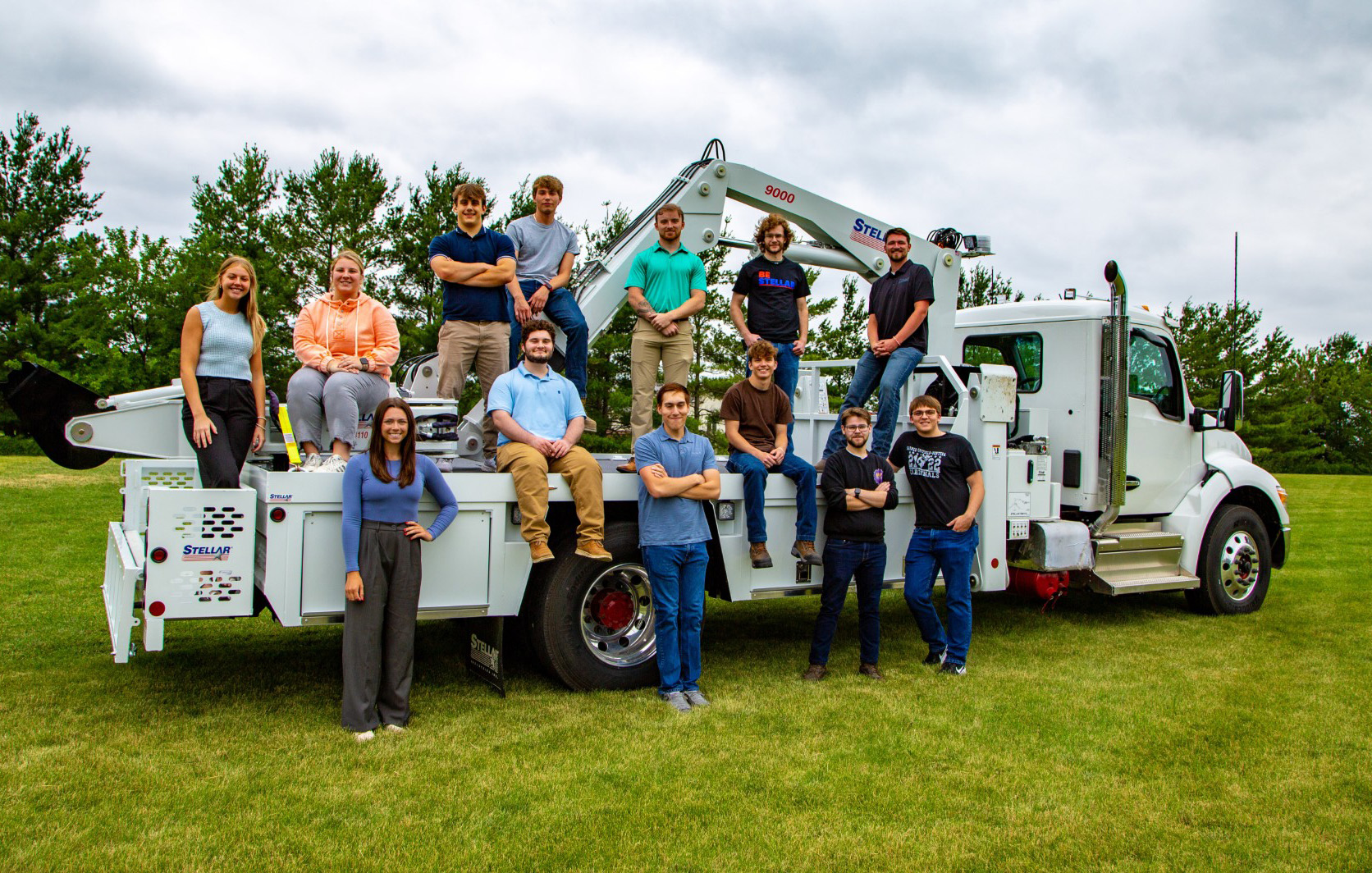By Gregg Wartgow, Special to AEM —
Equipment autonomy is often referred to in the singular sense. In reality, it’s a multi-layered technology that is utilized in different ways and to varying degrees. Most people don’t realize that, which is what fuels much of their confusion and concern over the idea of equipment functioning on its own.
“When some people hear the word ‘autonomy,’ their minds immediately go to, ‘The robots are going to replace us,’” said Mike Gomes, chair of AEM's Ag Technology Leadership Group. “The truth is, equipment autonomy uses mechanization and automation to perform tasks that people shouldn’t have to do.”
“Autonomy can be a big, scary word to some people,” added Nick Libbi, Director of CE Strategic Accounts at AEM member company CNH Industrial. “That’s why AEM has created a document that helps break down what autonomy really means to non-road equipment. You don’t go straight from a machine that is completely human-operated to one that is completely autonomous. In fact, automation is a key building block in between. Automation and autonomy aren’t about taking operators out of seats; they’re about making operators safer and more productive.”
The document Libbi referenced is Levels of Autonomy for Non-Road Equipment, which has been created to establish and promote a common language when talking about autonomy in the non-road equipment industry. The document is the result of the collaborative work done by AEM’s Ag and Construction Technology Leadership Groups.
“If we expect AEM members to speak intelligently and consistently about autonomy, we determined that they need to have a roadmap,” said Gomes. “So, in a simple one-page table, we show how you go from totally manual operation all the way to supervised autonomy.”
Establishing a common language helps get AEM members on the same page. This helps to ensure clear, consistent messaging when talking with stakeholders like dealers, end-users, lawmakers, and regulators.
The autonomy guidance document also highlights an important contrast between on-road and non-road equipment. Non-road equipment operates in more controlled environments where boundaries exist and access is restricted, such as farm fields, dairies, and construction sites. Thus, non-road equipment has a different risk level as compared to vehicles that are operating on roadways with high volumes of unrestricted traffic. It’s important for lawmakers and regulators to understand that as varying levels of non-road equipment autonomy continue to come to the forefront.
“If we expect AEM members to speak intelligently and consistently about autonomy, we determined that they need to have a roadmap. So, in a simple one-page table, we show how you go from totally manual operation all the way to supervised autonomy.” -- Mike Gomes
Understanding Different Levels of Autonomy
The autonomy guidance document is based on something that has existed for years, the Society of Automotive Engineers’ six levels of autonomy.
“By using something that’s already well-known, we are able to further drive home a common language around autonomy as it relates to non-road equipment—without adding more confusion,” Libbi said.
The six levels of autonomy are:
- Level 0 Manual Operation
- Level 1 Assisted Operation
- Level 2 Partial Automation
- Level 3 Conditional Automation
- Level 4 Supervised Autonomy
- Level 5 Unsupervised Autonomy
The guidance document provides a clear definition of each level, while also defining the roles of both the operator and machine. The document also provides examples of ag and construction equipment at each level, along with everyday consumer products.
“In creating this document, we wanted to provide enough detail that people would be able to wrap their minds around how these different levels of autonomy apply to non-road equipment,” Gomes said.
Take Level 1, for example, where a machine has one or more automated functions to assist with task completion, but each function operates independently with an operator operating the machine. The operator is responsible for situational awareness and safeguarding of the machine, while also managing the majority of the machine’s functions. The role of the machine, then, is to manage some (less than half) of its functions.
A good ag industry example of Level 1 Assisted Operation is section control on a sprayer. “It’s a single function and a binary decision to turn a section on or not,” Gomes explained. “In a situation like this, a machine can make those decisions better than a person can. That takes a lot of stress off the operator.”
A good construction example of Level 1 Assisted Operation is 2D or 3D Guidance. “There’s a display in the operator cab that shows a map of the jobsite,” Libbi pointed out. “That allows the operator to see their precise location and the amount of material to be cut or filled. That real-time information assists the operator, yet the operator maintains full control of the machine.”
At the far end of the spectrum, Level 5 Unsupervised Autonomy, a machine can operate on its within predetermined conditions and a predefined boundary, with no operator supervision required to complete a task. The machine is managing all functions to complete a task, with full situational awareness and the ability to manage through various environmental conditions or situations.
In the ag industry, a good example of Level 5 is an autonomous sprayer with auto-reloading. That sprayer can drive around a field and spray, and knows to park in a certain location when the task is complete or it needs to be resupplied.
In the construction industry, the best example of Level 5 is a haul truck because it can travel around a jobsite all on its own. We’re already seeing Level 5 haul trucks in mining operations. The concept of “machine learning” also comes into play at Level 5. “Every time that haul truck drives the same route, it learns more and more and becomes better and better,” Libbi said.
“It’s important to look at the environments we work in and figure out how to become more productive. There is some sensitivity around the idea of taking operators completely away because that means jobs, and that’s understandable. But when you look at Levels 1-4, autonomy is about broadening the scope of who can bring value to equipment operation. A lower-skilled operator can bring a lot of value because of this technology.” -- Nick Libbi
Autonomy Assists, Operators Decide
Gomes and Libbi each emphasized the importance of understanding that, regardless of the level of autonomy you’re talking about, the operator can always take full control of the machine. Autonomy and automation are simply there to assist the operator.
Sometimes safety is the motivating factor.
“The most hazardous place on a dairy is the manure pit,” Gomes shared as an example. “Given that, as a farmer, you don’t want people by that manure pit. This is where automation of the functions that deal with this particular area on a dairy farm make a lot of sense.”
Sometimes productivity is the motivating factor.
“It’s important to look at the environments we work in and figure out how to become more productive,” Libbi said. “There is some sensitivity around the idea of taking operators completely away because that means jobs, and that’s understandable. But when you look at Levels 1-4, autonomy is about broadening the scope of who can bring value to equipment operation. A lower-skilled operator can bring a lot of value because of this technology.”
As Gomes concluded, when people understand the roles of machine and operator, they can begin to see how certain levels of autonomy in different equipment and applications help create higher-value work, which leads to growth of the agriculture and construction industries.
To that end, autonomy may sound big and intimidating—but it’s nothing to fear. There just needs to be a common language everyone is speaking to clear up confusion and increase comfort level.
“With this guidance document AEM has created, we make the conversation about non-road equipment autonomy as simple as it can get,” Gomes said.
About AEM's Guidance Documents
A trio of member-driven guidance documents to help promote the agreed-upon use of common language when representing the non-road equipment industry and discussing the topics of autonomy, cybersecurity, and data were issued by AEM.
The guidance documents, which are available to view and download on AEM.org, were released in conjunction with AEM’s Celebration of Construction on the National Mall in Washington, D.C. They serve as consensus resources for association staff, members, and industry peers to drive conversations and communications related to autonomy, cybersecurity, and data.





